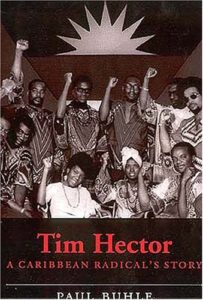|
Getting your Trinity Audio player ready...
|
Reading Time 3 mins
June 17, 2021
 The Oil refineries in Curaçao in the early 1940s played a significant role in steelpan coming to Antigua; that was where Antiguan workers met their Trinidadian counterparts. On one occasion, the Ship taking them back to Antigua stopped to refuel in Trinidad, and that was where they first heard the sound of Steel Pan, met the men who played them and saw the steel oil drums used to make them. Upon returning to Antigua, they set out trying to make the steel pans they heard in Trinidad. Point, a neighborhood along the coast where ships dock for repairs and sometimes their final resting places, was where they headed.
The Oil refineries in Curaçao in the early 1940s played a significant role in steelpan coming to Antigua; that was where Antiguan workers met their Trinidadian counterparts. On one occasion, the Ship taking them back to Antigua stopped to refuel in Trinidad, and that was where they first heard the sound of Steel Pan, met the men who played them and saw the steel oil drums used to make them. Upon returning to Antigua, they set out trying to make the steel pans they heard in Trinidad. Point, a neighborhood along the coast where ships dock for repairs and sometimes their final resting places, was where they headed.
Point is well known for being the home of “Iron Band,” the music our ancestors created using bits and pieces of iron, steel, and the metal rims of car tires. Iron Band was what we invented when the bakra and dem silenced the drum. Iron band was also connected to the John Bull character. I remember chasing us along the streets as boys. However, it would take many years and six months in Nigeria before I realized the connection between our “John Bull’ and the Egungun(ancestor) character that came back to the village each year to remind each villager of the importance of following the morals and ways of their/our culture.
So, in Point “Pint”, these workers congregated to try their hand at creating the steel pan and the sound they heard in Trinidad. They experimented by cutting the drums at different lengths, which changed the tones. The original sounds were based more on the rhythm of the iron band than the melody of the Trinidadian pan. The other major difference was, because of a lack of rubber in Antigua in the late forties and fifties, they played with the naked sticks, which also created a unique sound. It would be several years before rubber balls were added.
Several bands came out of Point, including Hells Gate, who brought the new sound to the people, marching uptown with the pan held against their bodies by a string around the neck one Saturday morning. It brought folks from all over the island anxious to hear this new music. Red Army followed them from Grays Farm, who gave Antigua its first Steel Pan star, Walter Herbert. The third group to emerge was Brute Force, who hailed from Ovals, my neighborhood; they took our sound to the rest of the Caribbean, including Dominica, Barbuda, Jamaica, Puerto Rico, and Trinidad; they were received with respect and praise.
Tim Hector, one of our National Heroes, spoke eloquently about the inseparable connection between iron band and steel pan.* He reminded us of the beautiful balance created by the melody of the steel pans and the rhythm of the iron band; and reminded us of the way cowbells accompanied the drums of our ancestors. I can remember many years ago joining the Antiguan people Jamming behind Burning Flames at the Brooklyn Labor Day parade. After a few songs, their generator conked out, leaving the crowd in a weird silence. Within minutes there were pieces of metal being handed out, and then I heard that familiar sound from my childhood, metal bouncing off metal, creating the rhythm of Iron Band Soca. That remains my very favorite Eastern parkway, Labor Day.
See Leonard Tim Hector, “The Steelband as Nationalism and Art,” The CLR James Journal vol. 8, issue 1 (winter 2000–2001): 108–115
 IYABA IBO MANDINGO is a painter, poet, writer, actor and playwright, Fashion Designer, Arts Collaborator, Artist Advocate, and Arts Educator. His work has been exhibited and performed across the globe. He came to the United States from his native Antigua as a boy. Iyaba credits his love of the arts to his mother, a trained singer, his grandparents, a tailor, and a seamstress who first introduced him to colors and patterns that would become the core of his work. Iyaba studied fine arts at Southern Connecticut State University and teaches in and around the tri-state area as a Master Teaching Artist. Iyaba currently resides in Bridgeport, CT, where his art gallery – 9104– serves as a workspace, classroom, and a creative hub.
IYABA IBO MANDINGO is a painter, poet, writer, actor and playwright, Fashion Designer, Arts Collaborator, Artist Advocate, and Arts Educator. His work has been exhibited and performed across the globe. He came to the United States from his native Antigua as a boy. Iyaba credits his love of the arts to his mother, a trained singer, his grandparents, a tailor, and a seamstress who first introduced him to colors and patterns that would become the core of his work. Iyaba studied fine arts at Southern Connecticut State University and teaches in and around the tri-state area as a Master Teaching Artist. Iyaba currently resides in Bridgeport, CT, where his art gallery – 9104– serves as a workspace, classroom, and a creative hub.
